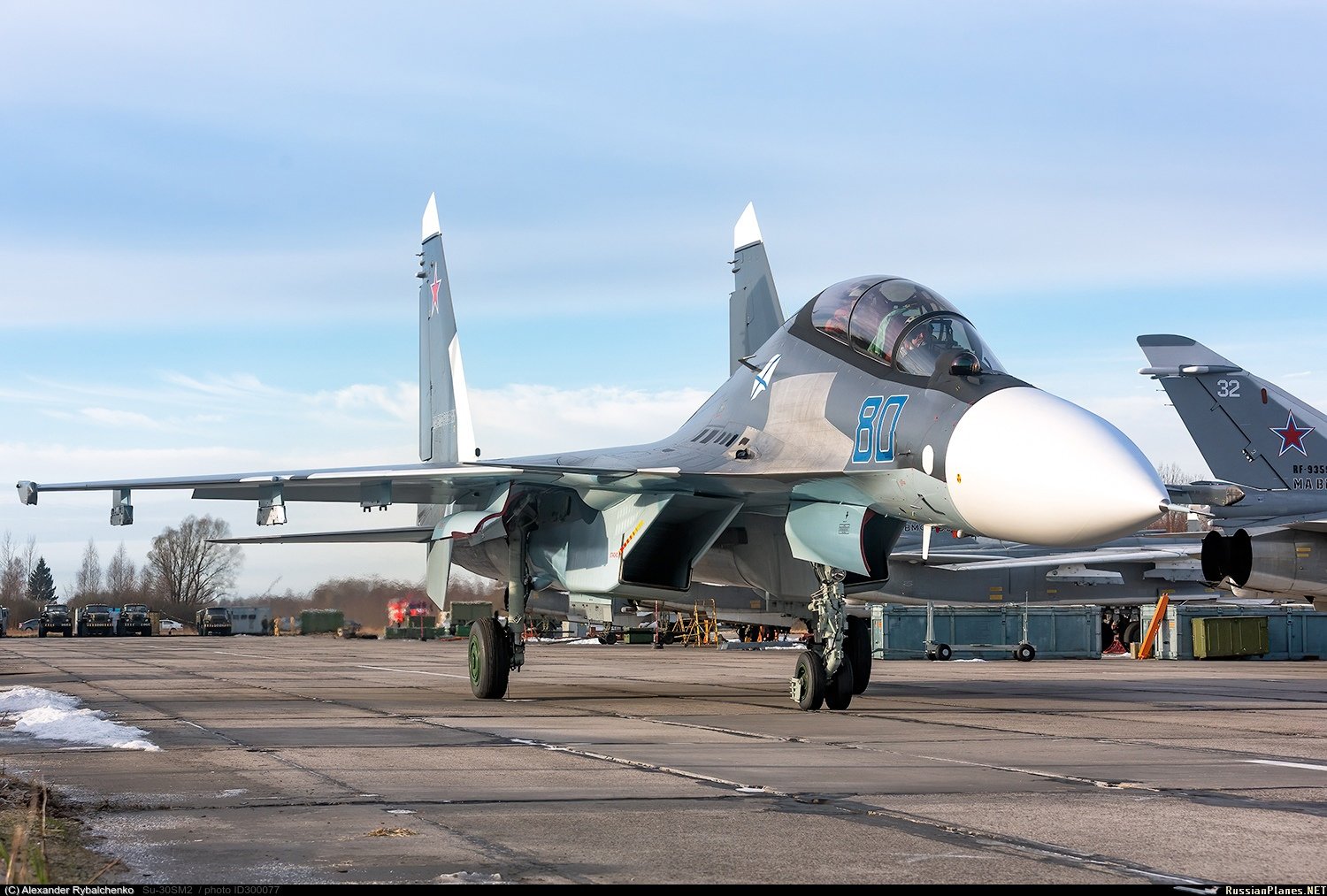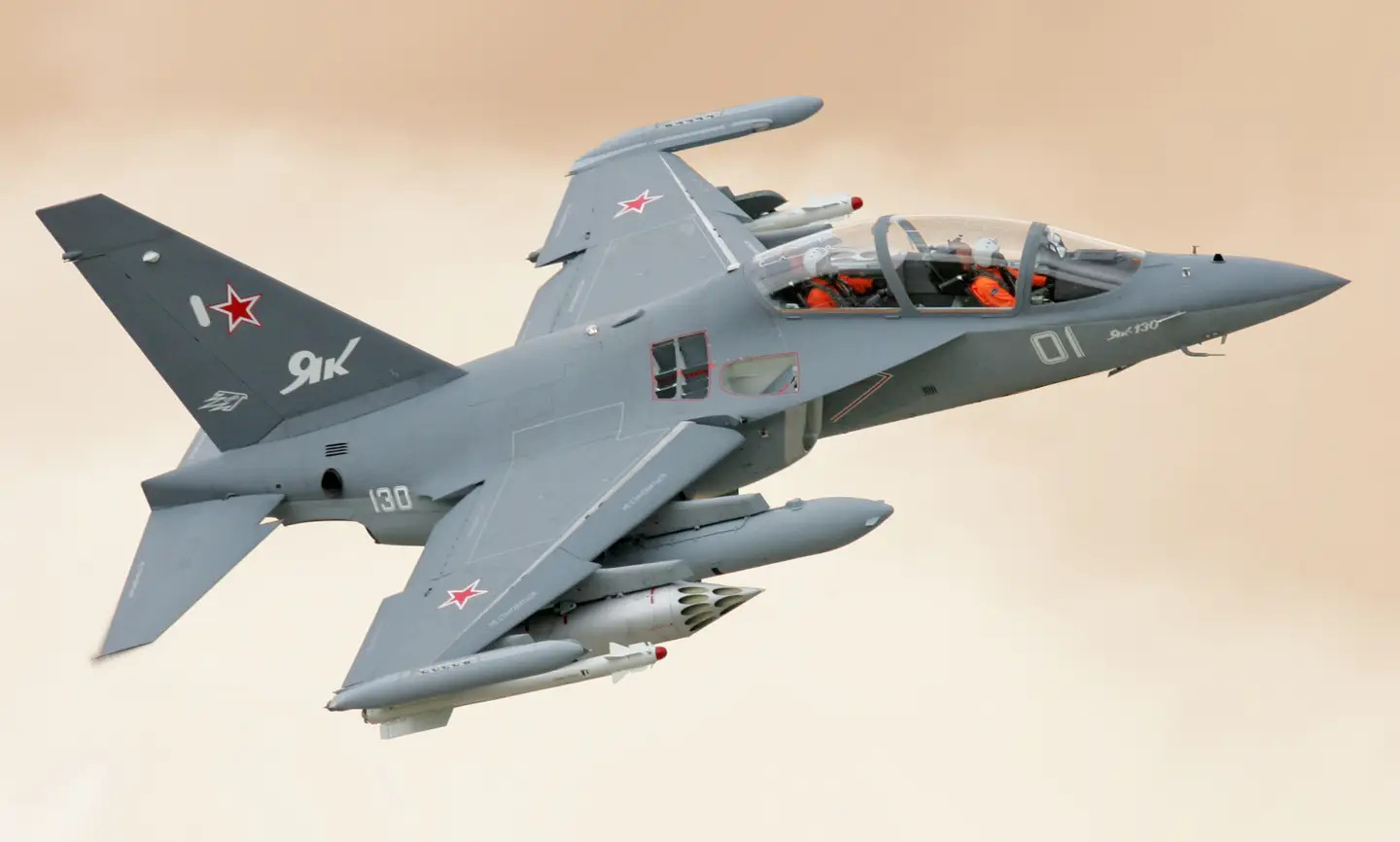In what is expected to bolster the combat capability of the Russian Air Force, Irkutsk Aviation Plant of the United Aircraft Corporation handed over a batch of multifunctional Su-30SM2 fighters and Yak-130 combat training aircraft to the Aerospace Forces of Russia.
“Irkutsk Aviation Plant timely implements the plan for producing new aircraft within the framework of the state defense order. A batch of Yak-130 combat training aircraft is completing deliveries of this type of aircraft under the current year’s program. Another Su-30SM2 will arrive in Russia.
The company has already started aircraft production under next year’s program,” said a press release published by UAC.
The corporation also notified that the aircraft passed the necessary ground and flight tests and went to the place of service. The latest delivery comes just months after the last batch of Su-30SM2 was delivered to the Russian Aerospace Forces (VKS) in July this year. This suggests that the production and testing of this cutting-edge fighter jet is proceeding in full force.
The Russian Air Force and the Navy employ the Su-30SM2 fighters, an upgraded version of the Su-30SM. The Su-30SM2 features improved onboard radio-electronic equipment. The new radar would also allow strikes on targets on land, in the air, and at sea from several hundred kilometers away when paired with new, precision weapons.
The modernized variant has a more powerful (AL-41F-S1) engine, IRBIS N035 radar, improved avionics, and modern weapons. Interestingly, the AL-41F-S1 engine and the IRBIS N035 radar were initially developed for the Su-35S fighter, indicating the aircraft leverages the technology meant for the Su-35, which has already proven its combat prowess in Ukraine.

As emphasized on previous occasions by Russian military watcher and Indian Air Force veteran Squadron Leader Vijainder K. Thakur, “The Su-30SM2 is an attempt to converge to the maximum extent possible the Su-30 family with the Su-35 series to minimize logistics and maintenance overheads.”
Russian Su-24M bombers, Su-30SM, and Su-30SM2 multirole fighters conducted precise bombing strikes on simulated targets during a military exercise hosted in July in Russia’s westernmost exclave of the Kaliningrad Region.
As part of the drills, naval pilots performed flights to a designated area to deliver precise bombing strikes using P50-T heat-resistant practice air bombs and 30mm artillery shells. The targets represented simulated enemy airfields, personnel, and equipment.
The whole range of contemporary and prospective high-precision air-to-air and air-to-surface armaments, such as X-59MK2 air-to-surface missiles and KAB-250 glide bombs, could be equipped on the Su-30SM2 aircraft in the future, according to experts.
Although the Su-30SM2’s induction is new and it is yet to see deployment in the conflict against Ukraine, the aircraft on which it is based, i.e., the Su-30SM, has been extensively deployed at the frontline along with the Su-35. The two jets operate in tandem to strike Ukrainian targets.
Last Batch Of Yak-130 For 2023
Along with the Su-30SM2, the Russian Air Force also secured delivery of the Yak-130, the last batch of these aircraft delivered to Russia this year, as noted by UAC Director General Yuri Slyusar.
”The Yak-130 combat training aircraft is completing deliveries of this type of aircraft under the current year’s program. The next Su-30SM2 will be delivered to the Russian Air Force,” the press service quoted him as saying. According to Slyusar, the enterprise has already begun work on the aircraft, which will be delivered next year.
In addition to conducting combat missions against ground and air targets in favorable and unfavorable weather circumstances, the Yak-130 training (combat-training) aircraft is designed for flight and combat training of pilots on the 4th and 5th generation fighters. As a result, the Yak-130 Combat Trainer Jet can be used for light combat operations and training.

The aircraft offers practice for every duty covered in the pilot training course, including combat use. It also boasts a high mobility and power-to-weight ratio, a high level of flying safety, and the ability to operate autonomously from paved and unpaved runways.
It can also carry various weapons such as 250-kg and 500-kg bombs; 80-mm, 122-mm, and 330-mm rockets; KAB-500 guided bombs; Kh-29 guided missiles; and two R-73 short-range air-to-air missiles (AAM). Moreover, the jet can carry two electronic warfare pods on both ends of the wings and external fuel tanks to increase the operational range.
The aircraft made headlines earlier this year when it was delivered to the Iranian Air Force in what was seen as a precursor to the delivery of the promised Su-25 Flanker-E jets. A Tasnim News Agency report of the Islamic Republic of Iran Air Force (IRIAF) receiving the jets showed the aircraft in a hangar with the IRIAF’s high-visibility paint scheme in September this year.
- Contact the author at sakshi.tiwari9555(at)gmail.com
- Follow EurAsian Times on Google News




